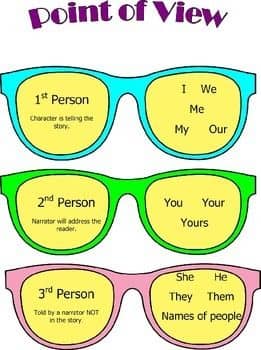
Writing in first, second and third person means you can present different perspectives or different points of view. But what is the difference between these three forms? It can be a bit confusing, so let us straighten them out.
First Person
The singular form of the first person is ‘I’ and the plural form is ‘we’. You use these two pronouns when you refer to yourself or yourself with others. Often the first person point of view is used in autobiographies or memoirs. This is when the author talks primarily about herself or himself.
For example: "I have fought against white domination, and I have fought against black domination.
I have cherished the ideal of a democratic and free society in which all persons live together in harmony and with equal opportunities.
It is an ideal which I hope to live for and to achieve. But if needs be, it is an ideal for which I am prepared to die". – Nelson Mandela
Second Person
When you use the second person you address the reader. The second person uses the pronouns ‘you’, ‘your’ and ‘yours’. Second person is often used in writing messages, presentations and technical instructions.
For example: “As you know, instructions are those step-by-step explanations of how to do something: how to build, operate, repair, or maintain things.”
Third person
When writing in the third person, the writer presents the point of view of another person/persons or place. The third person uses the pronouns ‘he’, ‘she’, ‘it’ and ‘they’. Fiction writing and academic writing most commonly use the third person.
For example: “She forgot to be shy at the moment, in honestly warning him away from the sunken wreck he had a dream of raising; and looked at him with eyes which assuredly, in association with her patient face, her fragile figure, her spare dress, and the wind and rain, did not turn him from his purpose of helping her.” ― Charles Dickens, Little Dorrit
The trick when writing is not to confuse the reader by switching from one person to another. If you are writing in first person, don’t shift to third person.

